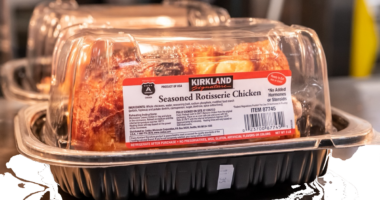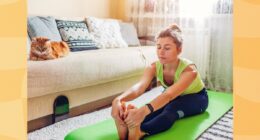If you’re feeling stressed, not sleeping well, or have lost touch with your healthy habits, it sounds like a wellness retreat is exactly what you need. I’m not talking about just any wellness retreat. I had the opportunity to experience an overall luxurious mind and body refresh at Sensei Porcupine Creek in Rancho Mirage, CA. It was precisely what I needed, and you’ll soon understand why.
I’ve always been a major advocate of self-care. However, this past year, between the craziness of planning a wedding and carving time out of a very taxing schedule to honeymoon, my wellness was totally out of whack and in need of major reconstruction. And I’m not alone. According to research, self-care in the United States is at an all-time low. In fact, most adults feel relaxed for a mere 40 minutes out of every 24-hour day. Close to half report even less than that.
Sensei Porcupine Creek was the perfect jumpstart to my wellness routine and allowed me to reevaluate my sleep, exercise, stress, and eating habits. Read on to find out every detail of my rejuvenating escape/rescue.
I learned how to make my days less stressful and my nights more restful.
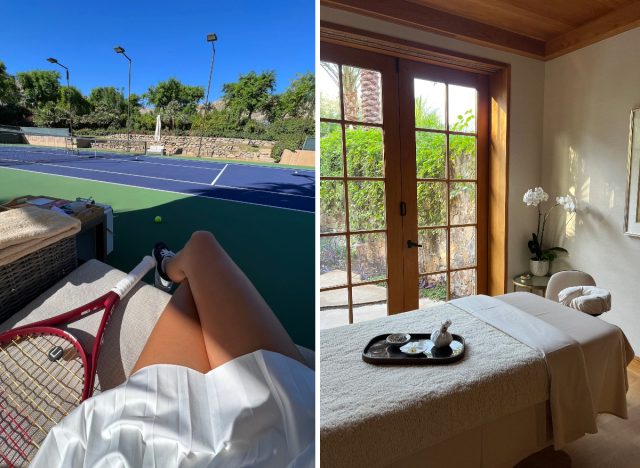

As part of Sensei’s Rest & Recovery well-being program, I fully embraced the opportunity to slow down my consistently fast-paced lifestyle and focus on recovery and life balance. My schedule for the five-night program included meditation and yoga classes, a private tennis lesson, a nutritious dinner each night at Sensei by Nobu, and invaluable information for wellness success—all set in a serene desert oasis. I also immersed my entire body and soul into a desert herb poultice and oil massage, along with a calming body cocoon. The program strives to enhance quality of sleep, effectively manage daily stressors, and set healthy habits for each guest with personalized steps that can easily be integrated into a daily routine.
Prior to my arrival, I was assigned a Sensei guide, who is a performance psychologist, who reviewed with me my preliminary goals and intentions for my stay. During my retreat, she walked me through every step of my journey. My main goal was to effectively channel and deal with excess stress and poor sleep patterns, which I learned are so closely linked. My type-A personality makes it challenging for me to get out of the stress zone once I’m in it. This snowballs into the inability for me to fully relax at night before sleep. That’s not the case any longer, though—these are the key takeaways from my Sensei experience.
1. Not all stress is created equal.
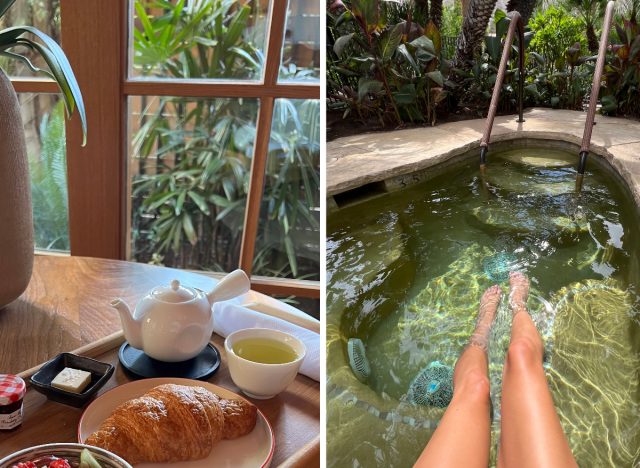

First and foremost, I learned that not all stress is “bad” stress, even though that’s how it’s perceived. Some stress can actually be a good thing. In my case, the “good stress” fuels me to get stuff done and be the productive person I am. “Eustress,” or “good stress,” is the kind of stress associated with excitement, while “distress,” or “bad stress,” is connected with feeling overwhelmed.
My private sessions helped me establish useful tools to effectively deal with any bad stress. Some of them include setting a timer to journal three things I’m most grateful for before bed or jotting down things I’m proud of when I wake up in the morning, along with dimming the lights, indulging in a luxurious bubble bath, and performing some progressive muscle relaxation exercises.
2. Daily walks and “movement snacks” are key ingredients for me to achieve better relaxation and quality sleep.
Another takeaway from the program? Daily walks and “movement snacks” are exceptionally helpful for my work-from-home lifestyle, as they get me up, active, and away from my desk—even if just for a bit.
My Sensei guide and I established that taking morning walks first thing upon waking would be a great addition to my routine. I was surprised to learn that being active in the early hours of the day can pave the way for my body to relax—even later on in the afternoon and into the evening. Basically, this morning regimen sets my body clock, helping me achieve more regular and restful sleep patterns.
In addition, I learned the importance of sprinkling “movement snacks” into little breaks throughout my workday to get me up and around. It’s all too easy for me to get wrapped up in my work and, before I know it, it’s already the end of the day and I haven’t moved from my laptop. A fitness expert at Sensei curated a personalized movement snack routine for me; some of the movements include lateral line stretch, pelvic reset, glute bridge with core assistance, and unilateral hip abduction. At first glance, they may not sound like the most intense exercises, but when I’m finished, I really feel the effectiveness and burn of my new routine.
READ RELATED: Jessica Tarlov Parents Nationality: Is Her Jewish Religion A Matter Of Question?
Since returning from Sensei, I’ve noticed a major difference on the days when I take a morning walk and do some movement snacking. I feel much better all-around and I have more ease falling and staying asleep.
3. Mindful movement nourishes and calms the nervous system.
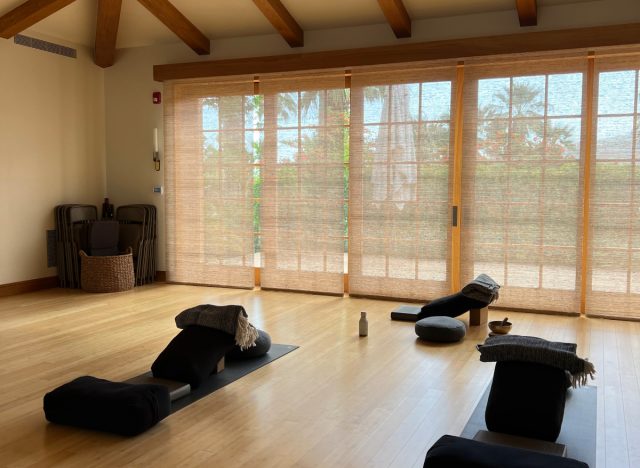

Other super unique forms of exercise I learned to practice during a private yoga session are Tai Chi Chi’h and Somatic Movement. Both of these practices are considered “mindful movement” and offer nourishment to the nervous system. Taking mini Tai Chi breaks—which includes standing up and moving through a simple yin-yang flow—gets my legs, feet, and arms moving, all while I focus on my breathing. This is another priceless addition to my daily routine.
I found somatics to be intriguing and soothing. Unlike Tai Chi, where the relaxation technique involves connecting each movement to the next in a flow, somatic movement had me lying down on a yoga blanket as my instructor walked me through gentle, tiny movements. The process made me mindful of how my muscles felt in each position, and it helped relieve any tension.
4. Sensory eating and intentional nourishment pave the way for a healthy digestive system.
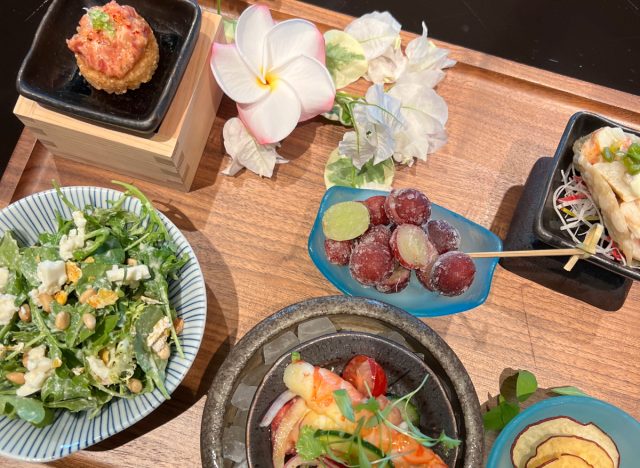

Although I loved every aspect of my Sensei experience, my sensory eating session happened to be one of my favorites. During this one-on-one class, I enjoyed an aesthetically pleasing, scrumptious platter of sensory delights, curated by Sensei by Nobu. Some of the items included arugula tofu salad with crispy preserved Meyer lemon, ceviche, and a mini lobster taco.
In real life—aka, when I’m not at a luxury wellness retreat—I typically rush through meals and don’t take the precious time to truly enjoy what I’m eating or appreciate the preparation. During my Sensei stay, I discovered how impactful stress can be on one’s digestive system and how important intentional nourishment is for the body.
I now know many practices I can follow to reach a more relaxed state when eating. For example, slowing down, doing deep breathing exercises, and being mindful of my senses are essential players of intentional nourishment. It’s also imperative to take the time to actually prepare healthy meals. This is something I’m still working on, taking it one day at a time!
5. A serene sleep space sets the tone for restful Z’s.
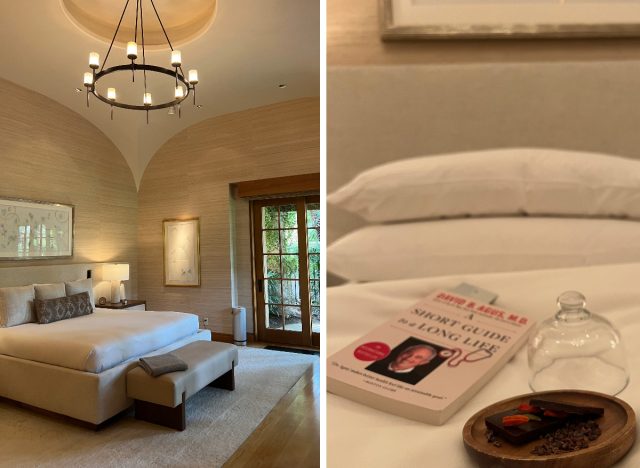

One extremely important detail of a restorative getaway, is, of course, the space you retreat to for downtime and slumber. Unsurprisingly, every detail in my room at Sensei was perfectly planned to foster rest, relaxation, and recovery—the absolute core of the program’s experience. (I really didn’t need to leave this glorious space the entire time I was there, but the rest of the resort was calling, too!)
My 600-square-foot casita was a total sanctuary. I enjoyed a picture-perfect view of the Santa Rosa Mountains from my private backyard, which was complete with an outdoor heated plunge pool, cozy lounge chairs, and beautiful gardens. My bathroom was furnished with a wood ofuro bathtub, rainfall shower, plush bathrobes, and every high-end spa amenity I could ever dream of.
One of my favorite features I looked forward to every evening was the turn-down service. When I retreated to my room after dinner, the lights were dimmed to “night mode” and there was something special put on my bed, like an inspirational book, a gourmet piece of chocolate, freshly chilled water, and my itinerary printed out for the following day. The luxurious, remote-controlled blackout shades, Molekule air purifier, and ultra-cozy bedding were additional elements that contributed to an ideal night’s rest.
My nights at Sensei enforced the importance of a carefully curated nighttime routine filled with certain soothing items I’ve since implemented at home—or plan to in the near future. So far, I got into the bedtime habit of sipping chamomile tea—a calming ritual that lets my body know it’s time to wind down and relax. I’ve also updated my bedding and shades and added an air purifier to my bedroom. The dimmer lights and rainfall shower are on my must-have wishlist. (Okay, I’d also love to add the heated plunge pool someday—all fingers crossed for my very own complete casita, right at home!)


